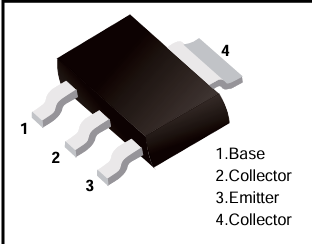Working Principle of Small-Signal Transistors 2
Date:2025-05-15 Categories:Product knowledge Hits:329 From:Guangdong Youfeng Microelectronics Co., Ltd
3.1 Cutoff Mode
In the cutoff mode, both the base-emitter (BE) and base-collector (BC) junctions are reverse-biased. With very little or no current flowing through the base terminal, there is almost no current between the collector and the emitter. This mode is often used in switching applications when the transistor needs to be “off,” blocking the current flow between the collector and emitter.
small-signal transistors3.2 Active Mode
The active mode is the most important mode for
small-signal transistors. In this mode, the BE junction is forward-biased, while the BC junction is reverse-biased. When a small current is applied to the base terminal, it creates a much larger current flow between the collector and the emitter. This current amplification property is what makes the transistor useful for signal amplification.
In the saturation mode, both the BE and BC junctions are forward-biased. The transistor acts like a closed switch, allowing maximum current to flow from the collector to the emitter with a very low voltage drop across them. Saturation mode is also used in switching circuits when the transistor needs to be fully “on.”
When a small-signal transistor operates in the active mode, the relationship between the base current (
), collector current (
), and emitter current (
) is crucial. According to Kirchhoff's current law,
. However, due to the transistor's internal structure and the properties of semiconductor materials, the collector current is much larger than the base current. The ratio of the collector current to the base current is called the current gain, denoted as
(or
in datasheets), so
.
For example, if a transistor has a
value of 100 and a base current of 10 μA, the collector current will be 100 × 10 μA = 1 mA. This amplification of the current forms the basis for using transistors to amplify small electrical signals.
small-signal transistors
Previous:
Classification, Structure, and Principle of MOSFET
Next:
Working Principle of Small-Signal Transistors
